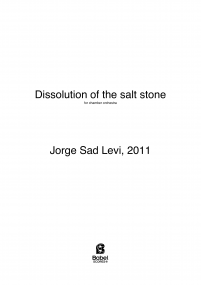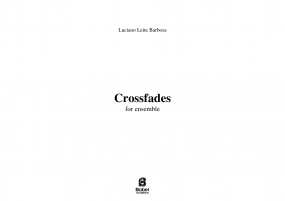Transom
ISMN : 979-0-2325-7575-9
- Login to create your own lists
Transom (2024) for ensemble and electronics contemplates the site of the Pruitt-Igoe housing projects in St. Louis, my birth city. Now a vacant lot where 33 large apartment buildings once stood from 1954 until their widely televised demolition in 1972, Pruitt-Igoe’s demise was famously hailed by the architectural critic Charles Jencks as the so-called death of modern architecture.
Formerly home to low-income and primarily Black inner city residents who were vilified and blamed for Pruitt-Igoe’s failure, it is now understood that the project’s rapid deterioration throughout the 1960s had been due to racist policies within local government. Pruitt-Igoe was also the site of Cold War-era military testing, and is where zinc cadmium sulfide had been sprayed throughout the premises to measure toxicity on residents. Unsurprisingly, no one mentioned this awful stain on our city’s history when I grew up in St. Louis years later: not in our civics classes, nor any of the times I went to hear music in clubs like Spruill’s, nearby the former Pruitt-Igoe site. My generation was left to discover our city’s deep-seated racism in other ways.
In 2020, inspired by Catherine Liu’s contrast between Pruitt-Igoe’s modernism and postmodern bourgeois decadence, I set out to create a piece of music whose structure grew directly out of the Pruitt-Igoe blueprints and those of the Frank Gehry Residence in Los Angeles, a hallmark of postmodern architecture and its many excesses, including gentrification. Using virtual models to treat these buildings as large resonators, their geometry can be heard in the instrumental parts generated from synthesized textures. The Gehry House, constructed from asymmetrical plates of glass, framing wood, and various other materials, yield richly nuanced harmonic fields, while the larger window panes, long walls of brick cladding, and slabs of concrete several stories high that characterize the Pruitt-Igoe buildings, forge deep, dark resonances and low, broadband filtered noise bands.
Piccolo
Oboe
Clarinet
Bass clarinet
Percussions
Piano
Harp
Violin
Viola
Cello
Electronics
Double bass
Pages - 84









